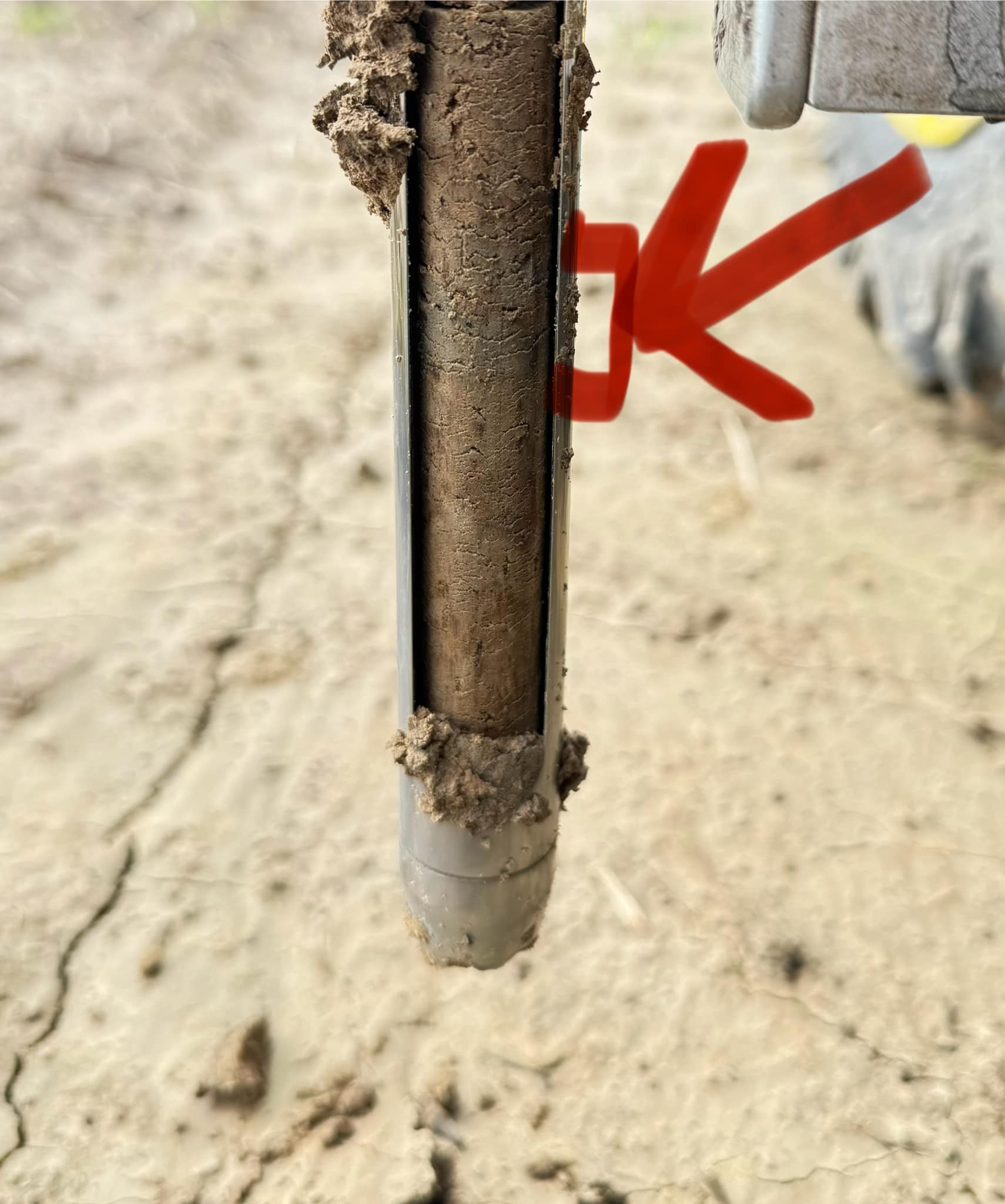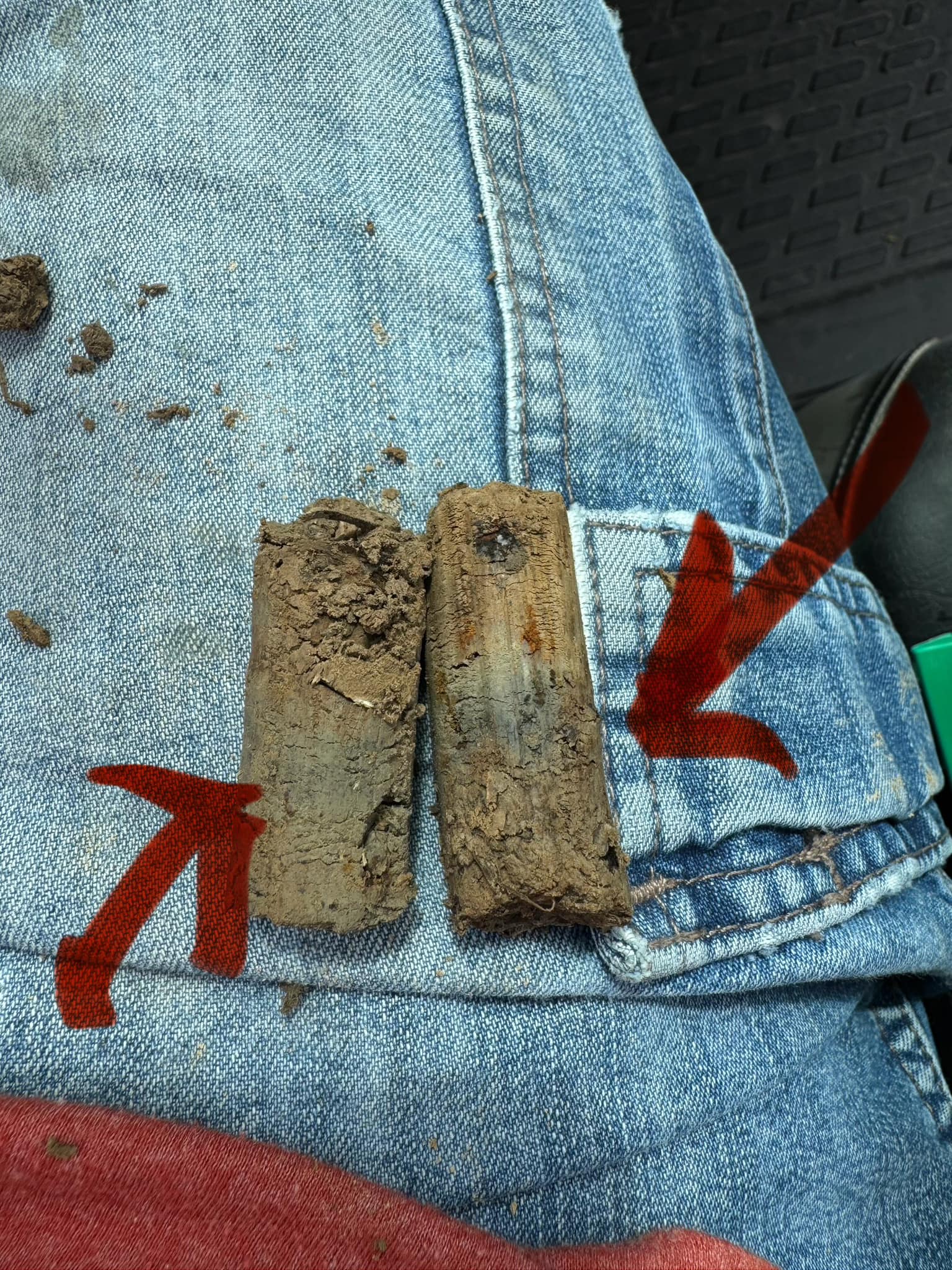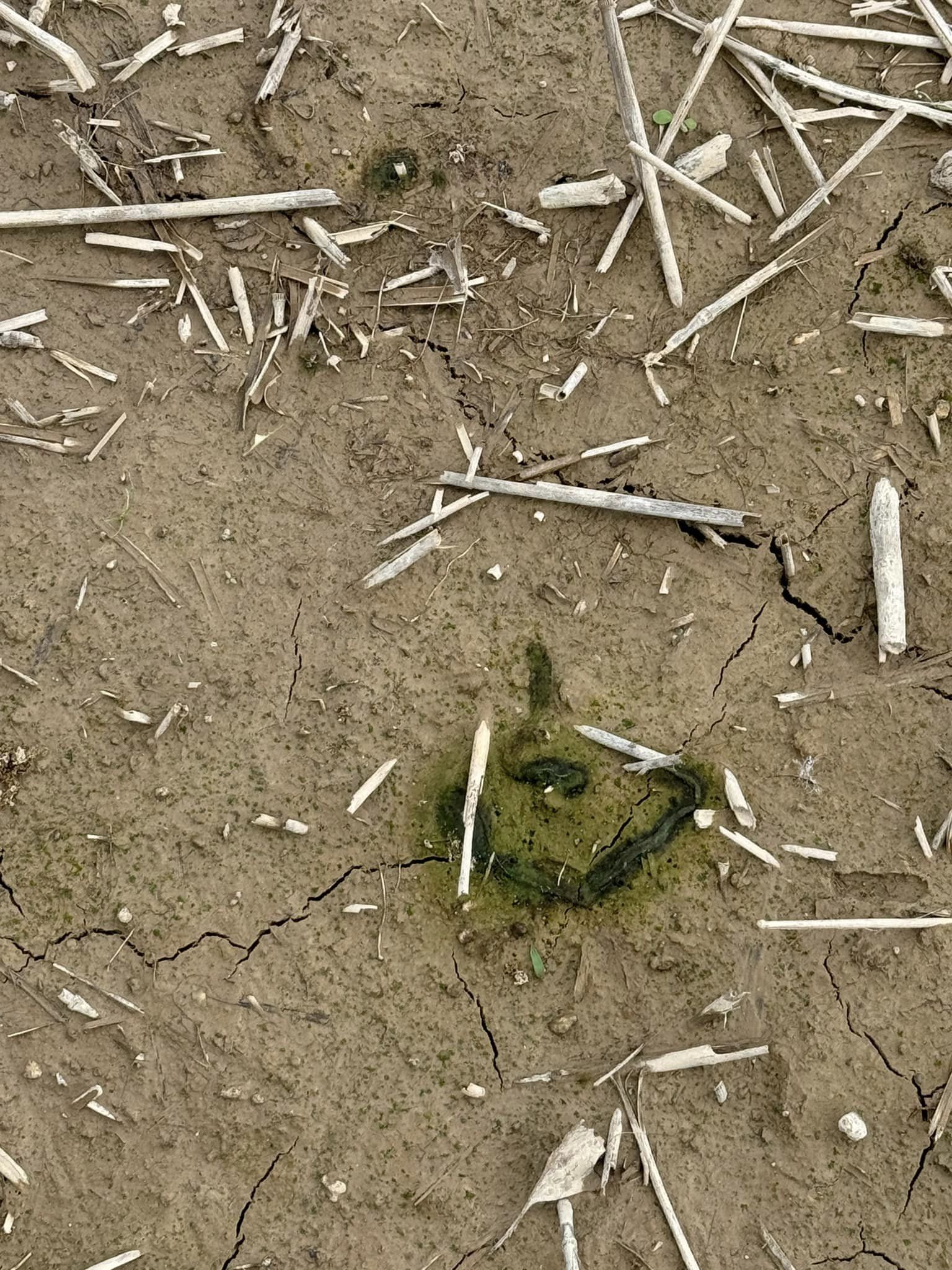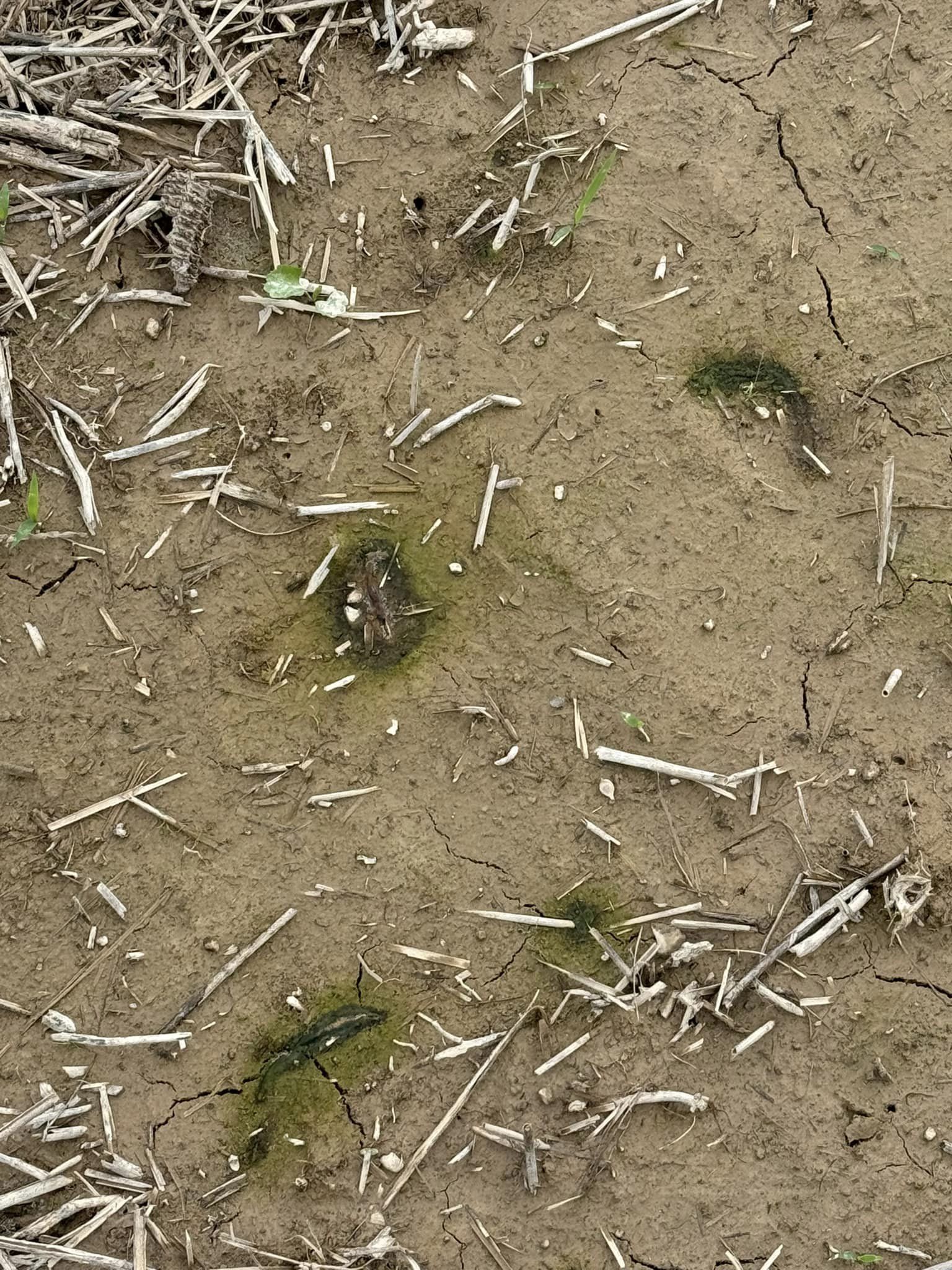There has been so much rain, especially in Southern Illinois. What does all this moisture do to the soil? Well, here are some examples provided by Kelly Robertson, Precision Crop Services LLC and IL Soy Envoy.
First you will notice a gray colored area at about 1-2 inches deep. This is an anaerobic layer and this means an absence of oxygen. This gray layer smells like rotten eggs or sewer. The lack of oxygen is shutting down the microbial and biological processes in the soil. It's also hurting the plants root system.
How wet is it? Well, these black or greenish, purplish spots on the soil are dead earthworms. The worms are coming up to get, you guessed it, oxygen. As they come up, they pass through the herbicide/insecticide zone and potentially die from the toxicity. But, more than likely due to the lack of oxygen. The previous blog, "What on Earth(worm) are Those Brown Things?" stated that some soil types, such as heavy clay, soil pHs, and soil texture such as sand or drainage properties may not support high earthworm populations regardless of management practices.
Terry Wyciskalla, owner-operator of Wyciskalla Consulting, LLC., says "roots, worms, and certain microbes prefer aerobic conditions and respire, which means they pretty much shut down. However, other groups of living things that can grow in these anaerobic conditions. Their fermentation process results in a terrible smell."
Robertson emphasizes "that no amount of magic fufu dust or biological colored water will fix this. IF TOO MUCH WATER IS THE PROBLEM, ADDING MORE OF SOMETHING ELSE ISN'T THE ANSWER. We need dry warm weather and in some cases a cultivator."
John Pike, Independent Research Agronomist and Consultant, says "we still have a long way to go until the end of the season but the rainfall that has occurred thus far has caused some major early season stress. Cover crop acres are cooler and wetter currently at this time of the year by nature, so there is no advantage with this management system. However, there could be a better soil structure, especially if you go deeper than 6 inches into the soil profile in fields that have had cover crops longer term, but not in all cases. Acres that have cover crops in their system less than 3 or 4 years may not be to the point yet where their soil structure has transitioned with the benefit of enhanced water infiltration."
For now, we continue to scout, learn, and see what Mother Nature has in store for us the rest of the season.






 and then
and then